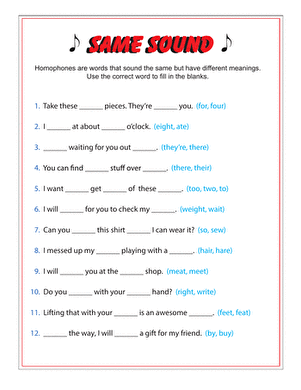Activity
Are All Sugars the Same?
Carbohydrates are organic compounds composed of carbon, hydrogen and oxygen. These compounds are used to produce energy by living things. Sugars, starches, glycogen and cellulose are all carbohydrates.
Sucrose, or table sugar, is obtained from sugar cane or sugar beets. Fructose is the sugar found naturally in fruits and widely used in the form of high-fructose corn syrup. Sucrose is composed of two simple (monosaccharides) sugars, glucose and fructose bonded together.
This project focuses on two classes of sugars: monosaccharides (fructose) and disaccharides (sucrose or table sugar). It will focus on the use of reagent tablets that will enable the investigator to determine if table sugar is the same as the sugar found in honey and/or fruit juice. The investigator will add the tablets to a series of test sugar solutions, observe the reactions, record the data, and draw a conclusion based on the results.
Problem:
Are the sugars in honey and fruit the same as table sugar?
Materials:
- 4 test tubes
- Test tube rack (optional)
- 8-ounce plastic drinking glasses
- Plastic table spoons
- Safety goggles
- Table sugar
- Honey
- Citrus fruit (orange, apple, lemon, etc)
- Reagent tablets for urine sugar testing
Procedure:
- Stand 4 test tubes in a test tube rack if available of a tall heat-proof container.
- Using a marking pen, label the tubes as follows: water, fruit juice, honey, and table sugar.
- Prepare a table sugar mixture by dissolving a tablespoon of sugar into an 8-ounce glass of water.
- Next, in a separate glass, add a tablespoon of honey to an 8-ounce glass of warm water. Stir until all of the honey has dissolved.
- In a separate cup squeeze as much juice as possible from a fresh orange or some other citrus fruit.
- Fill each test tube ¼ full of each of the liquids corresponding what is written on the label.
- Without touching the tablet with your hands, drop one reagent tablet into each test tube.
- Watch while complete fizzing-boiling reaction takes place. Do not shake the test tube during fizzing, or for the following 15 seconds after fizzing has stopped.
- At the end of this 15-second waiting period, shake the test tube gently to mix the contents.
- Then match the color in the test tube with the color on the tablet chart. This gives a reading of the sugar level in the test tube. Ignore sediment that may form in the bottom of the test tube. Ignore changes after the 15-second waiting period.
- If a color that appears to be in-between any two of the color bands assume it is an intermediate value. Record the results in a table.
- For a more scientifically valid investigation the entire procedure should conducted twice more. Empty and wash each test tube and repeat the same procedure for each test sample including the water. After each test record the results.
Results:
The honey solution and fruit juice will test positive for monosaccharide sugar presence and the table sugar will test negative indicating that even though it is a sugar it is not the same kind of sugar as that found in honey and the juice.
Why?
Reagent tablets are used to test for the presence of sugars in the urine, used by diabetics to monitor sugar levels. When a tablet is added to a solution that contains a monosaccharide sugar, a color precipitate is produced. The resultant color varies with the amount of sugar present, ranging from blue (no sugar) through green to orange (concentrated sugar). Reagent tablets reacts with all monosaccharide sugars, however, disaccharides such as sucrose (table sugar) will not react with them unless they are broken down through heating or the addition of acids. Table sugar would need to be broken down into its components glucose and fructose, then it would test positive.
Education.com provides the Science Fair Project Ideas for informational purposes only. Education.com does not make any guarantee or representation regarding the Science Fair Project Ideas and is not responsible or liable for any loss or damage, directly or indirectly, caused by your use of such information. By accessing the Science Fair Project Ideas, you waive and renounce any claims against Education.com that arise thereof. In addition, your access to Education.com's website and Science Fair Project Ideas is covered by Education.com's Privacy Policy and site Terms of Use, which include limitations on Education.com's liability.
Warning is hereby given that not all Project Ideas are appropriate for all individuals or in all circumstances. Implementation of any Science Project Idea should be undertaken only in appropriate settings and with appropriate parental or other supervision. Reading and following the safety precautions of all materials used in a project is the sole responsibility of each individual. For further information, consult your state's handbook of Science Safety.















